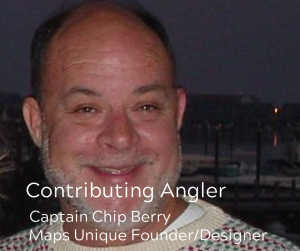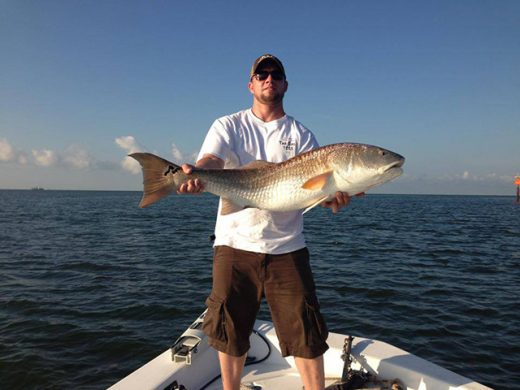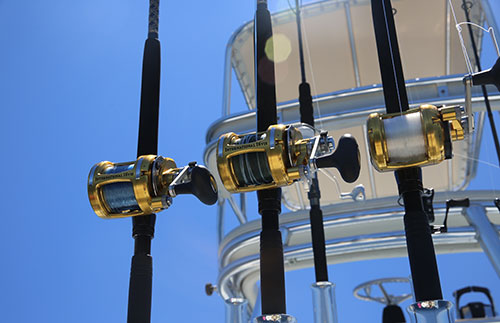Artificial Reefs and Marine Protected Areas……A Noble Effort Indeed
The artificial reef (AR) sites off the Carolina’s have provided a wonderful asset for the nearshore and offshore fisherman for decades. The states of SC and NC have progressive Artificial Reef Programs which continue providing an ever increasing array of new structure to enhance offshore habitat. SC has over 45 offshore reef sites and NC has 42 scattered on the inner continental shelf. They are found just a few miles off the beach to deeper areas of 110 ft. of water. Both states also have inshore reefs in many of our coastal bays, sounds and rivers. These estuarine reefs benefit Drum, Trout, Flounder, and Cobia.
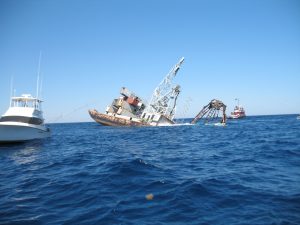
Deepwater/Memorial AR/MPA site. SCDNR file photo.
What makes the ever expanding artificial reefs so exciting for the offshore angler? Quite simply, they create additional hard bottom/live bottom with each and every new deployment of reef materials. This is important when one realizes that in our ocean, exposed naturally-occurring hard bottom/livebottom—made of limestone and sandstone rock is found on only about 10-15% of the upper shelf. These bottoms are greatly responsible for our fisheries and the marine food chain process. Artificial reefs add to this prime but limited habitat. When AR structures get covered with growth of barnacles, sponge, soft corals, invertebrates and similar marine life provide the same function as a naturally occurring reef. All of the AR sites also provide substantial relief and are designed to maximize nook and cranny niches for different species of marine life.
0ffshore AR sites must be federally approved by the US Army Corps of Engineers. Existing sites are approximately a square mile in size (SC reef sites range from ½ mile to 1.5 mile square). Once permitted, the states can than continue to deploy materials as an ongoing project. Materials out there include great diversity such as 440 ft. Liberty ships, large barges, tugboats, bridge materials of concrete and steel, concrete culvert pipe and steel rubble fields, and much more. Some materials are actually custom made for reef development such as hollow concrete reef balls, concrete/steel pyramids and custom cone units, as well as nearly another dozen designs.
I was surprised to recently learn from Robert “Bob” Martore, AR Reef program director for the SCDNR that we have only utilized about 5% of the total areas already permitted for AR’s. That really surprised me considering the massive amounts of materials already deployed through the years. Bob says that over the past 2 years there have been about 18 deployments each year. A deployment can be a very large single ship or could be a very large “barge-load” consisting of reef balls, concrete rubble, steel beams, and other large, long lasting structure.
According to Martore, South Carolina’s AR budget was approximately 400,000 last year. A good chunk of the funding comes from the sale of the saltwater fishing permits and some from The Sport Fish Restoration Act along with CCA and fishing clubs. I was further surprised as to the small amount of funds his program has considering the substantial amount of popularity and effort put into this program. Not to mention the economic impact of “83 million” dollars per year provided by recreational fisherman and divers who seek these resources in just South Carolina alone. That is one hell of a return on investment!!!
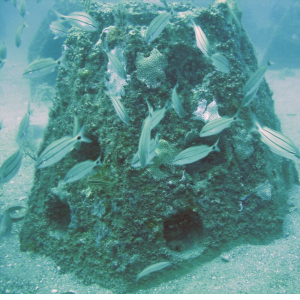
One of the 400 concrete cone units deployed on AR/MPA area 53. SCDNR file photo.
Two recently developed AR sites off of Charleston, SC are not only creative but might provide a vision of where additional AR site development can expand into the future. The two sites are referred to as Area 51 and Area 53. Each site is a 1.5 mile by 1.5 mile area and was designated on non-productive bottoms. Area 51 is in 70 ft. of water and area 53 is in 100 ft. These locations place them in close proximity to the naturally occurring 60 and 90 ft. live bottom terraces. Each site contains 400 concrete custom designed structures. The two sites were not publically announced, giving Marine Resource ample time for fishery professionals to study recruitment, bio-diversity, and spawning behavior of fish. These two new AR’s were also designated as two of the new Marine Protected Area (MPA’s), along with the deep water AR MPA referred to as the Deepwater/Memorial Reef. The Deepwater MPA was created on an area along the 100 fathom break 60 miles southeast of Charleston. This is a 1st of its kind deep water offshore AR site and is approximately 6 mile X 4 mile in size. 2 massive barge structures and a steel bridge truss have already been recently deployed but this area will continue to periodically acquire reef building structures for many, many years to come. New materials will create high relief structures and additional live bottom habitat along the 30-100 fathom break. This particular site was chosen as it was determined to be a less productive area along the shelf break.
So what is the scope of the Marine Protected Area (MPA) concept? How does it benefit anglers and or restrict fishing activities on these sites? A few years ago, The South Atlantic Fisheries Management Council (SAFMC) — which is the lead agency for fishery Management from southern Florida through NC, designated a very limited number of naturally productive bottom sites into this conservation program. Some MPA’s are referred to as deepwater marine protected areas or either spawning special management zones. As mentioned, Area 51 and 53, along with the Deepwater/Memorial AR sites are also designated MPA’s. There are currently an additional seven natural bottom MPA sites designated off SC, NC and GA. All are along the 30-100 fathom offshore break, except Gray’s Reef which is in 60 foot of water and has been designated as a National Marine Sanctuary for many years. There are additional MPA’s off the east coast of Florida.
The seven in the Carolina’s and Georgia listed north to south are:
- South Cape MPA— 4 mile x 2 mile area in the vicinity of the Swansboro Hole
- Snowy Grouper MPA—10 mile x 12 mile area in the vicinity of Nipple/Same Ole
- Northern SC MPA—5 mile x 10 mile area in the vicinity of Hal’s Ridge/North Winyah Scarp
- Devil’s Hole MPA—3 square mile area directly in the apex of the Georgetown Hole.
- Edisto MPA—5 x 8 mile area between SW Banks and Edisto Banks
- Georgia MPA—10 mile x 7 mile area east of the Sow Pen/Deli
- Gray’s Reef Marine Sanctuary—17 square mile area located 16 miles east of Sapelo Island
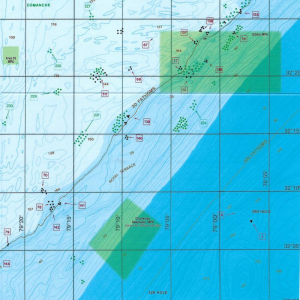
3 MPA’s. Area 53 is NW, the Edisto MPA is NE, and the Deepwater/Memorial Reef is south. Source Maps Unique
These chosen sites are prime live bottom habitat and are known for providing extremely diverse bottom structure and aggressive spawning bottoms, especially for the Snapper-Grouper complex. And that is the purpose of the MPA’S— to protect the most prime habitat and have them strategically scattered geographically. I consider these natural MPA’s as being a “Pumping Machine” “for eggs and larvae. Marine creatures will drift in the current and eventually settle on suitable bottom habitat which will replenish and help sustain these and other natural live bottoms— a continual nourishment of existing habitat. The end result is more fish, more marine bio-diversity, and health for the ocean’s biological food chain system. This is a win-win scenario for the recreational and commercial fisherman. Everybody wins.
MPA’s do limit and actually prohibit the taking of bottom species in the Snapper-Grouper complex. But the spawning benefits of these biological rich marine reserves, which are certainly limited geographically, will more than compensate for any bottom fishing area loss. Plus fishermen are allowed to top water fish and troll for gamefish over an MPA. These areas will definitely increase the top water angler experience for gamefish such as Blue and White Marlin, Sailfish, Tuna, Wahoo, Mahi, and Kingfish. The experience will be enhanced simply due to the large amount of baitfish and other bio-diversity that these areas produce and protect.
There is no argument that our offshore fisheries will experience more and more pressure in the future. The Artificial Reef programs and the MPA program will be a continued positive way to keep us all in fish. Fish houses, seafood restaurants who demand local wild caught fish, the commercial fishery and recreational fishery success’s will all depend on productive and increased quantity of habitat. Let’s support these efforts with a passion.
More info on MPA’s can be obtained at www.safmc.net
